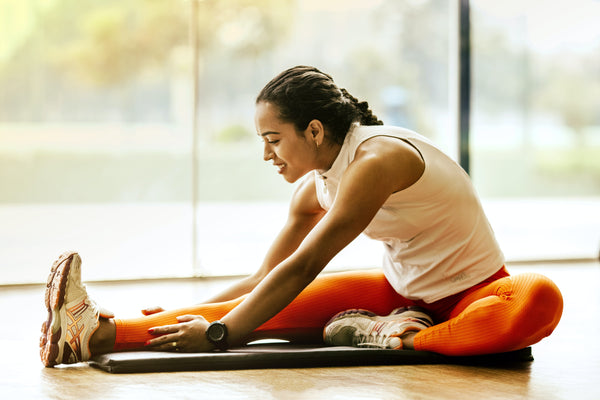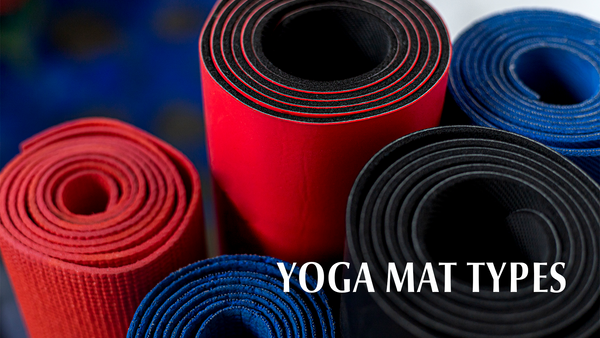
Yoga is a great practice for the mind and body. It can help increase flexibility, build strength, and improve overall health. However, like any physical activity, there is always a risk of injury. In fact, some injuries are more common in yoga than in other physical activities. In this article, we will discuss the role of yoga mats in preventing injuries during yoga practice.
Major injuries that usually occur during yoga
While yoga practice may improve flexibility, strength, and overall well-being, there are some common injuries and knowing them might help you prevent such injuries. Here are the most common injuries:- Wrist injuries: Wrist injuries are common in yoga due to the weight-bearing poses such as plank, downward dog, and chaturanga. These poses put a lot of pressure on the wrists, and if not done correctly, can lead to wrist pain, sprains, or even fractures.
- Shoulder injuries: Shoulder injuries can occur in poses such as handstand, crow, and even downward dog. These poses require a lot of upper body strength, and if done incorrectly, can cause shoulder pain, impingement, or rotator cuff injuries.
- Lower back injuries: Lower back injuries can occur in poses such as forward fold, downward dog, and triangle pose. These poses require a lot of flexibility and can put a lot of strain on the lower back if not done correctly.
- Knee injuries: Knee injuries can occur in poses such as lotus, hero pose, and triangle pose. These poses require a lot of flexibility and can put a lot of pressure on the knees if not done correctly.
7 ways yoga mats help prevent injury
It important to be aware of the potential risks and take necessary precautions to prevent injuries. Here are a few ways yoga mats help prevent injuries during yoga practice:
- Stability: Yoga mats provide a stable surface for your practice, which helps prevent slipping and losing your balance. This stability is especially important when practicing standing poses and inversions, where a fall can lead to serious injury.
- Cushioning: Yoga mats provide cushioning for your joints, which can help prevent injuries such as bruises, sprains, and strains. This is particularly important for poses that put pressure on the knees, elbows, and wrists.
- Alignment: A good yoga mat has alignment markers that help you maintain proper alignment during your practice. This not only helps prevent injuries, but it also helps you get the most out of each pose.
- Hygiene: Yoga mats provide a hygienic barrier between you and the studio floor, preventing the spread of bacteria and other germs. This is especially important in communal spaces where many people practice.
- Traction: Yoga mats are designed with a non-slip surface that provides traction, which helps prevent slipping and sliding during your practice. This is particularly important for hot yoga, where sweat can make the mat slippery.
- Customization: Many yoga mats come in a variety of thicknesses and materials, allowing you to customize your mat to your specific needs. This is especially important if you have joint issues or require extra cushioning.
- Mindfulness: Yoga mats are a reminder to be mindful and present during your practice. When you’re focused on your breath and your movements, you’re less likely to push yourself too hard or make a careless mistake that could lead to injury.
- Comfort: A comfortable yoga mat can help you relax and focus on your practice, reducing the risk of injury due to stress or tension.
- Portability: A yoga mat can be easily rolled up and transported, allowing you to practice yoga safely and comfortably wherever you go.
- Personal space: Yoga mats provide personal space for each practitioner. This can help prevent collisions and accidents during yoga practice.
By providing stability, cushioning, alignment, hygiene, traction, customization, and mindfulness, yoga mats play a vital role in preventing injuries during your practice.
How to choose the right yoga mat for injury prevention

Choosing the right yoga mat is an important factor in injury prevention during your yoga practice. Here are some considerations to help you select the best mat for your needs:
-
Thickness: Choose a mat that is thick enough to provide cushioning for the joints, but not so thick that it hinders balance and stability.
-
Traction: Choose a mat that provides good traction and grip to prevent slips and falls.
-
Material: Choose a mat that is made from a durable, high-quality material that can withstand regular use.
-
Size: Choose a mat that is the right size for your body. A mat that is too small can limit your range of motion, while a mat that is too large can make it difficult to maintain balance.
-
Price: Invest in a high-quality yoga mat. While it may be tempting to buy a cheap mat, a high-quality mat can last longer and provide better support and injury prevention.
In conclusion, yoga mats play a crucial role in preventing injuries during yoga practice. The risk of slipping and falling, which can result in fractures, sprains, or other injuries, is significantly reduced when using a yoga mat. The use of a yoga mat also provides support, cushioning, and stability, which is essential for proper alignment and balance during yoga poses. Additionally, yoga mats offer various benefits, including improved hygiene, increased comfort, and ease of transportation. Overall, investing in a high-quality yoga mat is a wise decision for yogis at all levels to ensure a safe and enjoyable practice.










0 comments